Samsung 27.8 cu. ft. Food Showcase 4-Door French Door Refrigerator in Fingerprint Resistant Stainless Steel
Food Showcase Door: Provides quick access to everyday items. FlexZone Drawer: flexible storage with four temperature settings. Wi-Fi and Bixby Enabled: Control and monitor your fridge remote.
A refrigerator that is beautifully designed, with an modern dispenser, polished door, and sleek handles. The Food Showcase Door provides quick access to on-the-go items. Now available in beautiful Tuscan Stainless.
-
Food Showcase Door – Provides quick access to everyday items while minimizingthe loss of cool air
- FlexZone Drawer – Aflexible storage drawer with four different temperature settings and an adjustable Smart Divider to stay organized
- Adjustable Shelves – Adjustable shelves go from standard to slide-in or flip-up, to store tall items with ease
- Wi-Fi and Bixby Enabled – Use your smartphone tocontrol the temperature and monitor your refrigerator remotely
- AutoFill Water Pitcher – A built-in pitcher that automatically refills with filtered water and the option to infuse with a flavor of your choice
- Fingerprint Resistant Finish – A special finish to reduce smudges and minimize cleaning
- High-Efficiency LED lighting designed to beautifully light up the interior of your fridge so youre able to quickly spot what you want
- Accessibility (ADA Compliant) – Easy to reach controls for everyone
- Twin Cooling Plus – Near-commercial grade humidity levels, helps prevent spoiling and freezer burn
- Metal Cooling – Stainless steel paneling maintains consistent temperature throughout the refrigerator
- Ice Max – Large capacity, storesup to 10 lbs. of ice
- ENERGY STAR Certified – Eco-friendly and energy-efficient
Additional information
| Depth (Excluding Handles) | 34 |
|---|---|
| Depth (Including Handles) | 36.5 |
| Depth (Less Door) | 29.4 |
| Depth With Door Open 90 Degrees (In) | 48.25 |
| Height to Top of Door Hinge (in.) | 70 |
| Height to Top of Refrigerator (in.) | 68.9 |
| Product Depth x Height x Width (in.) | 36.5 x 70 x 35.75 |
| Refrigerator Width (In.) | 35.75 |
| Color - Appliance Cabinet | Stainless |
| Color/Finish | Fingerprint Resistant Stainless Steel |
| Color/Finish Family | Stainless Steel |
| Defrost Type | Auto / Cycle |
| Door Finish | Smooth |
| Energy Consumption (kWh/year) | 755 |
| Energy Efficiency Tier Rating | Tier I |
| Freezer Capacity (cu. ft.) | 8.3 |
| Freezer Door Type | Pull Out Drawer |
| Freezer Features | Adjustable Leveling Legs,Adjustable Temperature Control,LED Light Type,Sliding-Bulk Storage Baskets |

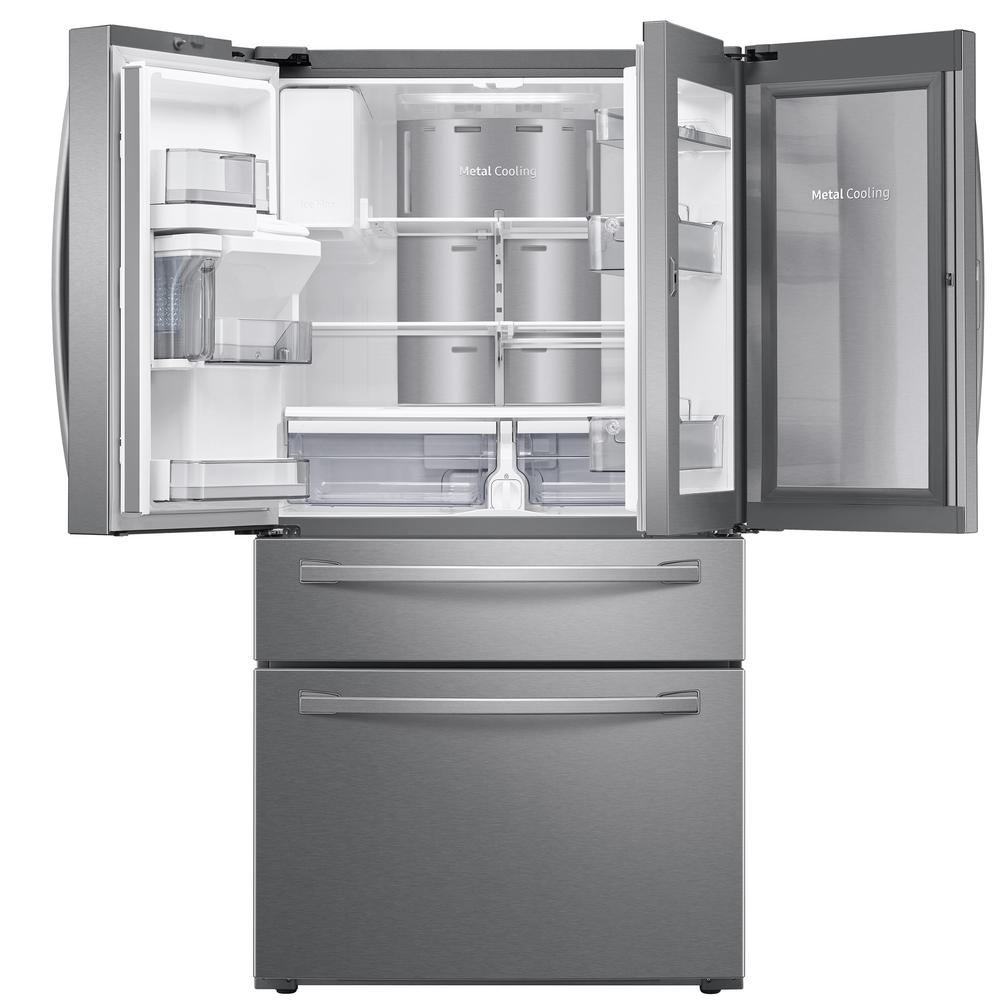
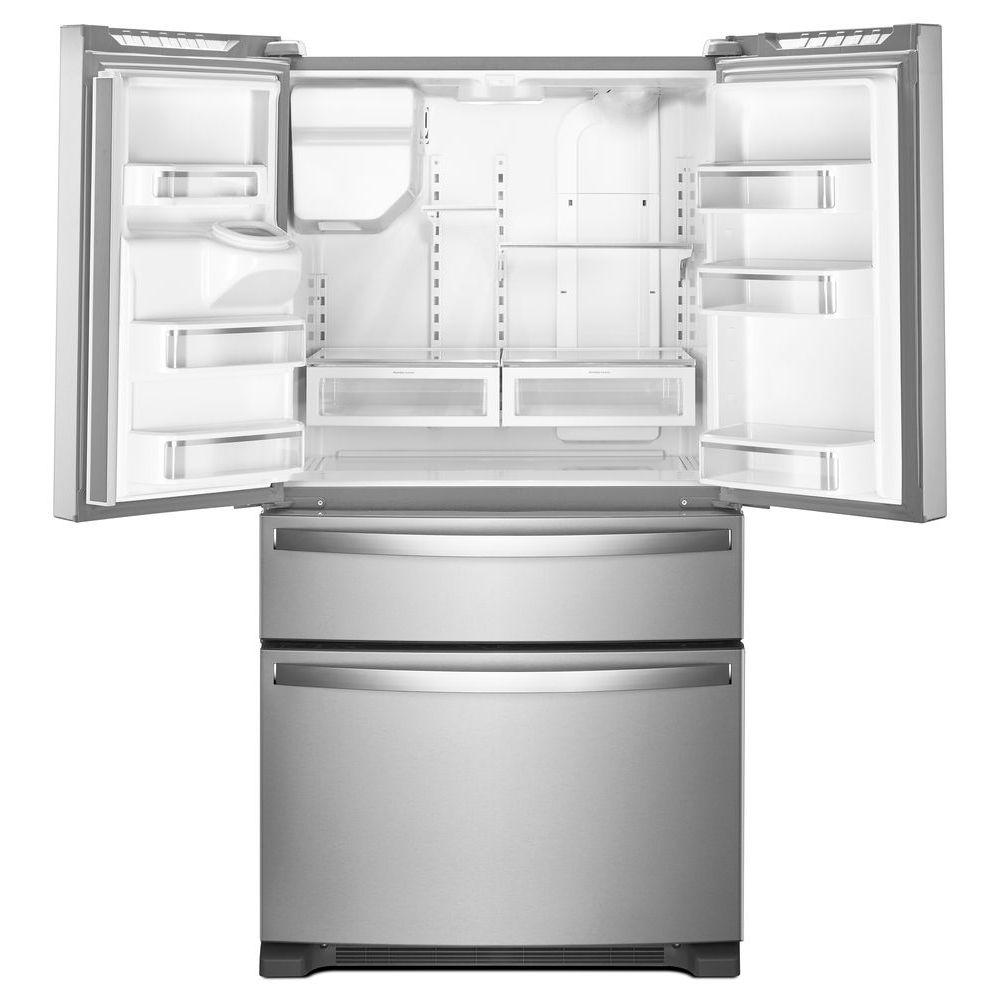
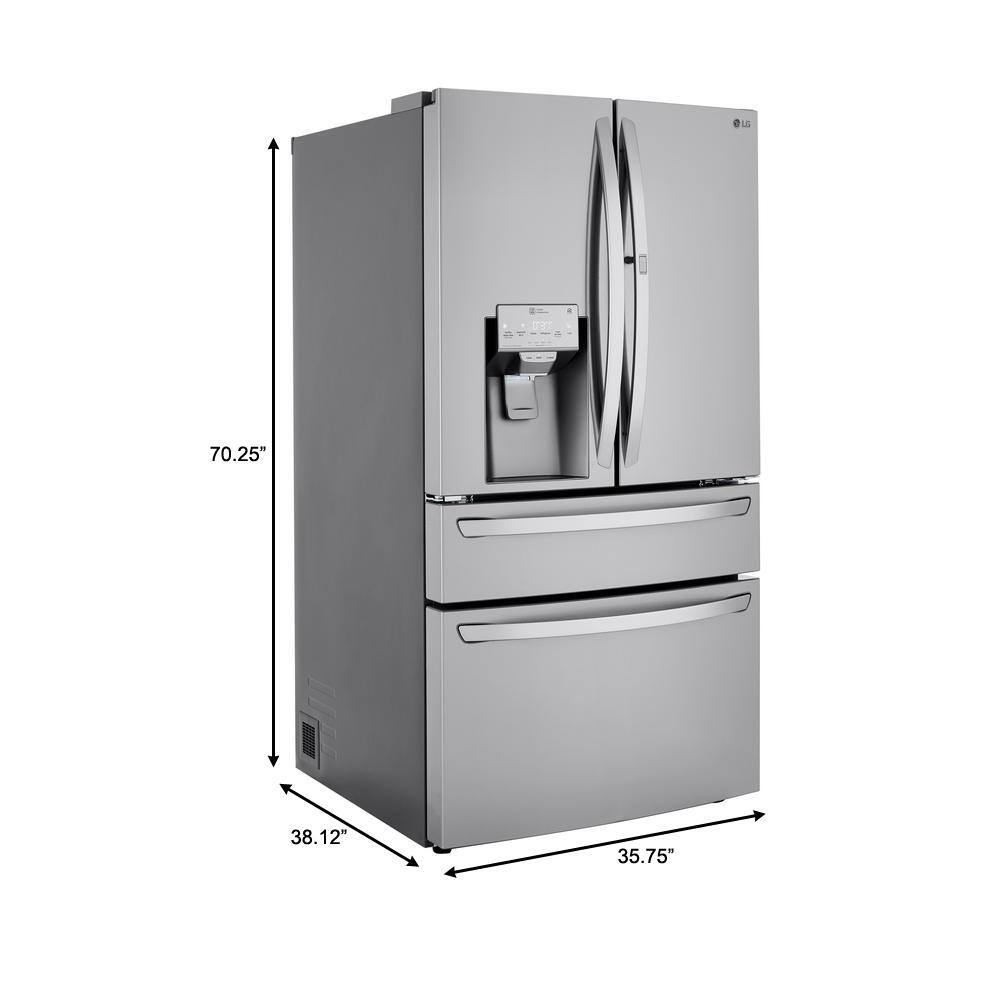
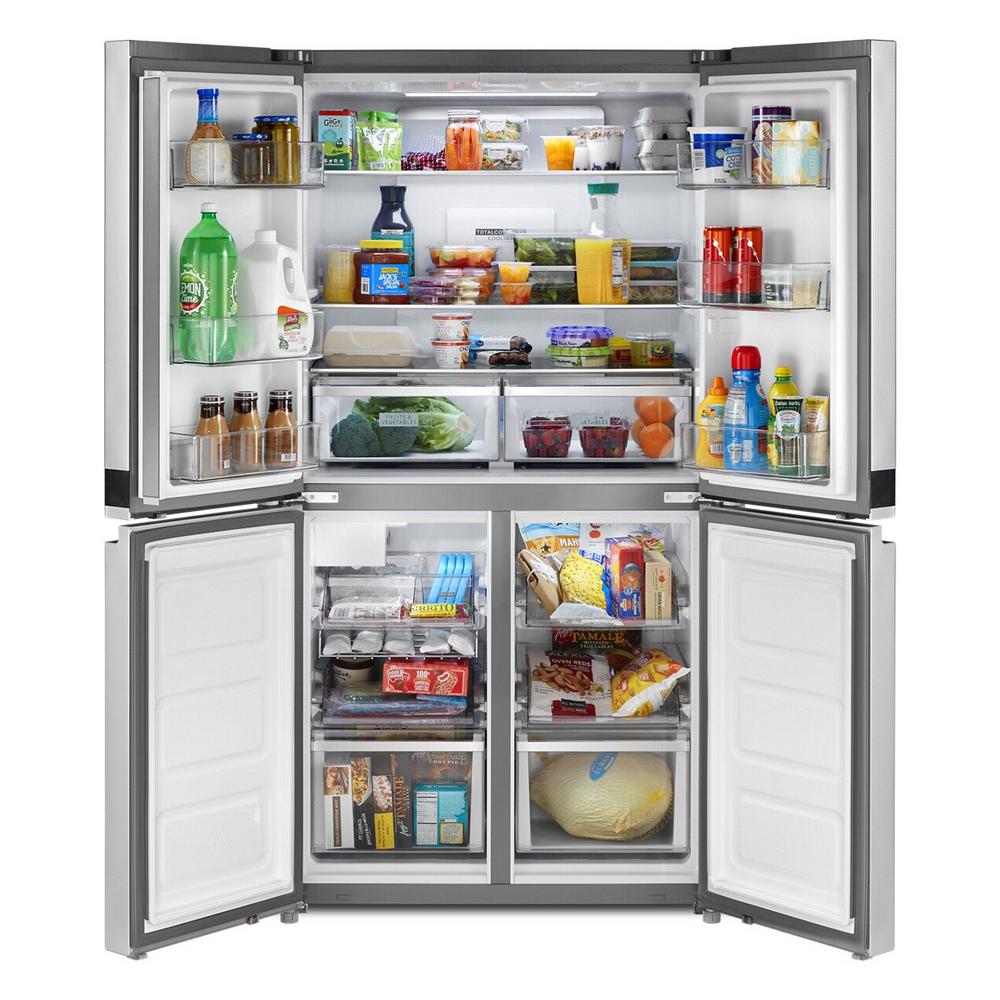
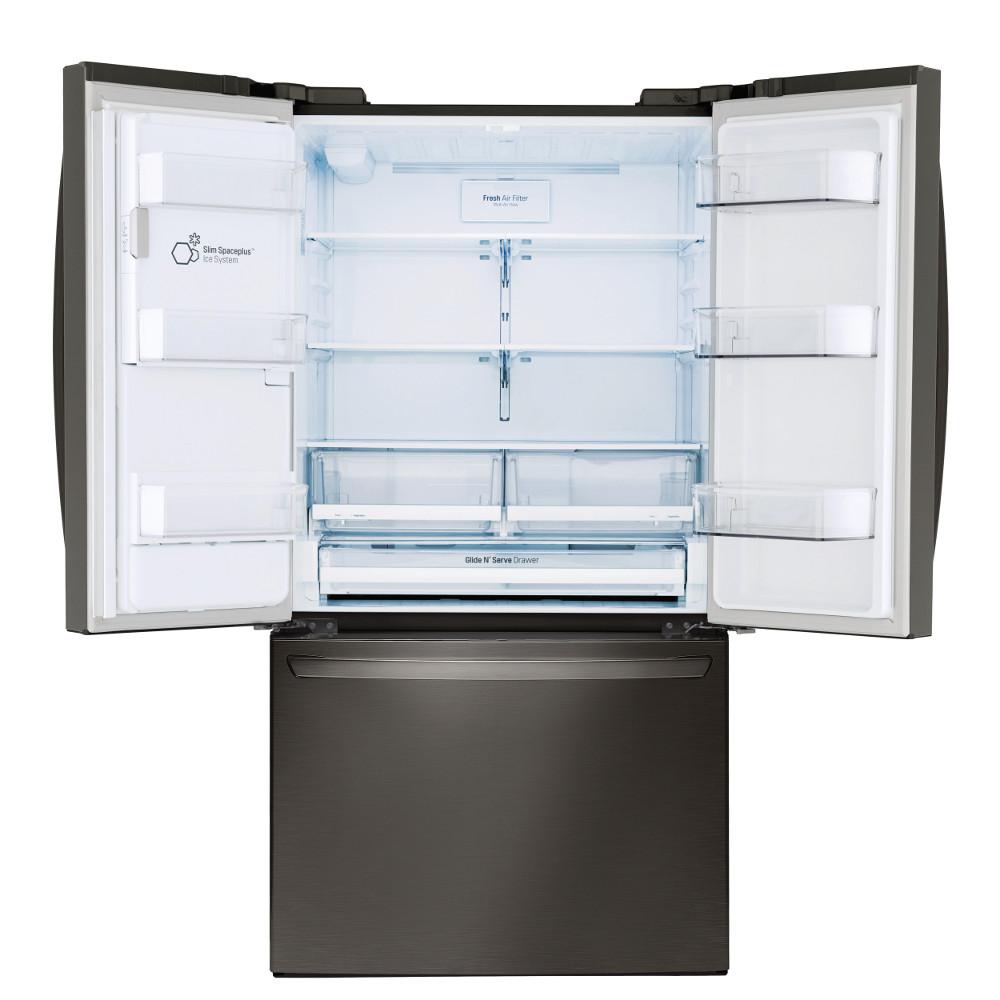
by Murray
We really like this fridge. Lots of space. You won’t regret buying it.
by Machechie
We were reluctant to buy this refrigerator because of all of the negative reviews. After a lot of searching, we couldn’t find another frig that we liked better, so decided to throw caution to the wind and give this one a try. We’ve had it 2 days now and so far, we’re very happy with it. Everything is working just fine. It’s a beauty in stainless steel and it looks great in our kitchen. We find it spacious, with many different shelving options. The sliding shelf makes it easy to store tall items. Some of the features we love are the flex drawer, water pitcher, the food showcase (it’s nice to be able to open the small door and grab a drink without having to open the door completely), and the ability to connect it to the Samsung SmartThings App. Connecting the refrigerator to the App was an easy process. The App gives you the ability to control the frig/freezer temperatures from your phone. It also allows you to input the name and expiration dates of items you put in the frig. The App then lets you know when the expiration is reached. Great feature! Our only minor complaint was that the left side of the top shelf wouldn’t fit into it’s slot on the right shelf. We contacted Samsung and they are sending someone out to replace the shelf. Good service so far. I gave it 4 stars under Features because the water/ice dispenser does not have a light. I found that feature a plus on my old frig. This review was not collected as part of a promotion.
by Taylor
purchased this back in september. really like all the options. ice maker working fine so far so we will keep fingers crossed. water pitcher started leaking while pouring after first month and we dealt with it. ordered replacement which showed up yesterday and it leaks right out of the box. tried to contact samsung through facebook today. initially no response for 20 minutes. then jon reached out to me. i explained the situation and the only response was to send another pitcher. when i said reading other reviews showed that was not a fix, i never heard back from him. he just left the conversation.
by Flores
I purchased this refrigerator and to be honest not really sure I was making the right decision. Well fast forward 4 months….it’s the best investment i have made. It’s so spacious, many different shelving units and the flexzone drawer is spectacular. The small but yet genius idea is the water pitcher inside….incredible!
by Luis
We bought the fridge almost a year ago and it looks beautiful. The ice maker is not great because it is difficult to control how much ice comes out, and the water filter needs replacing every 4-5 months or so. Each filter is like $40. The one main complain is the installation process. Even a year later we continue to find pieces of plastic inside the fridge due to a mediocre and fast-paced installation procedure. We could tell the crew that came to our house were bothered that they had to do this for us. It is a multifunctional fridge, that looks nice, but be aware that this does not provide its usual top quality standard to the installation of appliances.
by Kenny
We love the idea of having a pitcher that gets refilled with water every time. Genius!! And you can infused the water with whatever you want. The overall functionality of it is great! I love the color, the size, everything!
by Michael
i always dreamed of having my kitchen all samsung, and so i did, my husband and i did everything to buy, we worked hard and bought, refrigerator, stove, microwave, everything, in all of them we made extended warranty, when the refrigerator arrived i was in love , i was a little sad because when i wanted whole ice, even then it came out crushed, but so far so good, i was still in love, but then, it just stopped working, in addition to draining water on my entire floor, which damaged , my foods are all spoiling, i’m 3 days trying to contact the assistance, they say they can’t do anything, that only on the 15th of september they will have some answer to my problem, and how do i stay ??? no refrigerator!